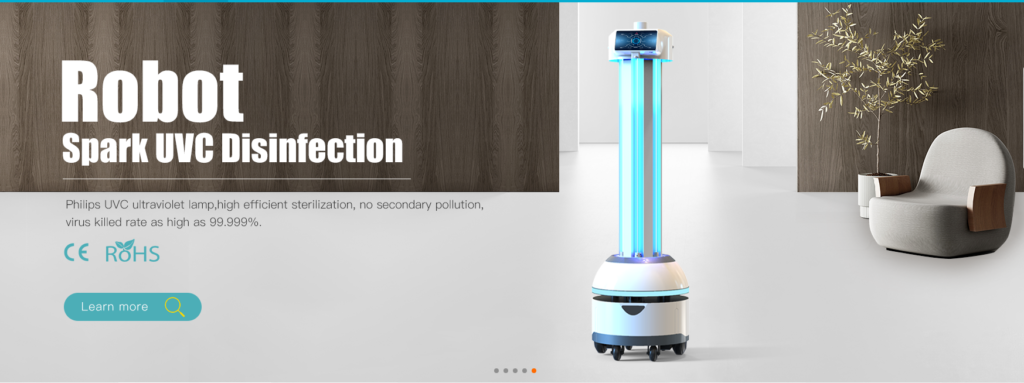Keeping patients safe while they are admitted to the hospital is the number one priority for nurses and doctors. When a patient gets an infection while in the hospital the staff needs to look at what went wrong and how infections can be handled in the future.
One of the best ways to prevent infection is to use a hospital-grade UV sanitizer robot. This way, you never have to worry about germs or pathogens.
Hospital-Grade UV Sanitizer Robot: What Are They?
A hospital-grade UV sanitizer is a mobile robot with an ultraviolet lamp that can clear away bacteria and viruses.
While these robots have been around for a long time, they gained massive popularity in hospitals during the COVID-19 pandemic. Using robots to kill hospitals allows fewer people to come into contact with potentially dangerous bacteria.
The robots use UV light to kill all the bacteria and virus particles they come into contact with as they roam around the hospital. Most robots come with special mapping technology so you can program it exactly where to go and where to clean.
Reeman has several UV sanitizer robots, including:
• Spark UVC Sterilization Robot
• Sword3 UVC Sterilization Robot
The robots are designed with you and your cleaning needs in mind.
Benefits of Hospital-Grade UV Sanitizer Robots in Healthcare Facilities
Effectiveness against pathogens
One of the main benefits is that all pathogens can be easily cleaned away and killed without worrying about your patients coming into contact with dangerous particles.
Since the robot will be doing the disinfection process, you do not have to bring in cleaning staff and expose them to pathogen particles.
This is also important because no workers need to be around when the UV robot is working, which means no one is exposed to UV radiation.
Reduction of hospital-acquired infections
Most patients that come to the hospital are already sick. When they pick up an infection while in the hospital, their life is in danger, and your hospital’s reputation falters.
Safe and eco-friendly
They are better for the environment compared to paper towels, cleaning chemicals, and mops. The robots are also safe for patients compared to people who might get sick when exposed to certain chemicals found in disinfectants.
Time and cost efficiency
UV robots can clean much faster compared to a cleaning team. It is also more cost-effective than buying cleaning products and paying the labor of the cleaning team.
Increased consistency and coverage
With a cleaning robot, you get the same results every time. You can also ensure the robot goes into all the areas it needs to, with extra coverage in areas that tend to get especially dirty.
Reeman has many different disinfecting and sanitizing robots that you can use in hospitals or other healthcare settings.
All of Reeman’s UV robots are specially designed to be efficient, thorough, and broad spectrum and not cause any unnecessary pollution in the air.
Application of Hospital-Grade UV Sanitizer Robot
Use in healthcare facilities.
Hospital-grade UV sanitizer robots are commonly used in healthcare settings because they are a fast and efficient way to clean and disinfect all surfaces. They can disinfect items much quicker than a worker would be able to.
Types of surfaces sanitized
The robot can sanitize all surfaces, including walls, operating rooms, toilets, bed rails, and floors.
Examples of UV sanitization robots in hospitals
A common example is that many hospitals have robots that can quickly clean the operating theatres to begin operating on another person much quicker. The robots can quickly clean surfaces much better than a cleaning staff member.
This is especially important in large hospitals with busy emergency rooms where several people might need operative care.
UV sanitizing robots are also very effective at getting rid of superbugs. Superbugs are diseases that tend to linger in hospitals and get many patients sick simultaneously. They can also easily spread to nurses and other healthcare workers.
With the use of the UV robot, your employees and patients can be less concerned about catching one of these illnesses while in the hospital.
Challenges of Hospital-Grade UV Sanitizer Robot
Cost and maintenance
A robot needing to be repaired can cost thousands of dollars. This is only sometimes possible, especially for smaller hospitals that might not have it in their budget.
Integration into hospital workflows
Many nurses, doctors, and other hospital staff are used to working with human cleaners at night and during certain hours of the day. The staff will need to learn how to work around the robots, which can take some adjustment.
All employees need to be briefed about when the robot will be cleaned so they can expect it to be around.
Since the robots emit UV light, the workers must stay out of the general area where the robot might be working. This means the robots need to be put on a schedule where they clean when fewer people are around or in areas of the hospital that might close during a specific timeframe.
Human error
All UV cleaning robots need to be programmed to know where to be cleaning and when. Maps must also be made so the robots know how to get around.
Humans can make errors when it comes to the schedule or the mapping. This can cause the robot to miss certain cleaning areas or be in the wrong place at a very inconvenient time.
Conclusion
Hospital-grade UV sanitizer robots have many different advantages including being able to keep patients safer and healthier. UV robots are able to more effectively kill pathogens and bacteria that can be dangerous to patients.
UV sanitizing robots are a good investment for all hospitals and healthcare facilities.
Hospital Robot
Contact Us
Email: rmsales1@reeman.cn
Whatsapp: +86 18665898745
About Us:
Reeman, derived from the word “reinforce” (REE) and “human” (MAN) Intends to enhance human capabilities. Let robots help humans everywhere and add infinite possibilities to life.
Follow Us:
Facebook: https://sourl.cn/Gg9UJd
Youtube: https://sourl.cn/cwyd27
LinkedIn: https://sourl.cn/eQ8VPE




























